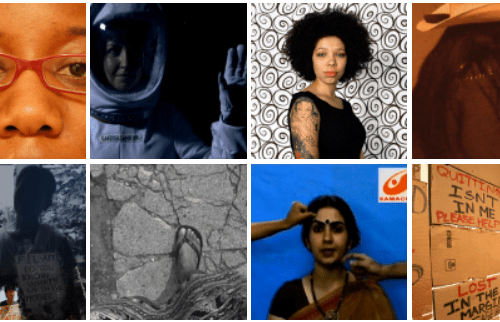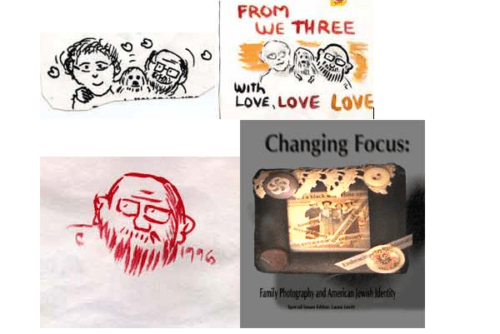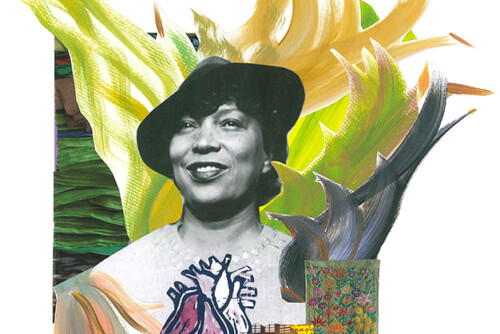Sight and Sound
In his essay of the early 1960s, “The Poetics of the Open Work,” the Italian writer and theorist Umberto Eco found music to be a perfect model for a more dialectical, even ethical, relationship between artist, object, and audience. A musical score is not the original, nor is any one performance a copy. Music therefore provided a way of thinking repetition with difference, conceiving a structure that did not also structure everything in its wake.
To some, Eco might seem an unlikely source for feminists. But his political investments resonate with our own: after all, this desire for a model (but one that resists stagnation) inspired the editors of this issue to also choose a musical metaphor—polyphony—as its theme. For this same reason, his theory of the open work has many affinities with the aspirations and critical projects of feminism and feminist art more broadly. Looking across this history, the paradigm of the open work seems almost implicit: from the performance art of the 1960s, to the appropriation art of the 1980s (not to mention many other practices in between and after), feminist artists have sought to dissolve the universal claims of modernism and assert the “poly” whenever monotony was assumed. But the meaning of music for feminism goes beyond method or metaphor. Music scenes, styles, and cultures have been a central part of its movements—from folk, to riot grrrl, diy, and punk. Even this short list illustrates that when it comes to the cultural practices that incorporate and politicize our everyday lives, feminism has always already been polyphonous.
In this spirit, the current online exhibition brings music that resonates with the metaphorical power of polyphony together with visual works of art that do the same. Whatever the form—video, photography, performance, song—each strives to imagine what a more expansive practice of feminism could look, sound, and/or feel like. Because these are artworks, this appears less as a singular goal than a continual experiment. It is this experimental quality that is precisely what art has to offer, what distinguishes it from activism. Art often is, after all, a politics that does not always look like politics, at least when we limit our notion of politics to a goal-oriented, literal, or even easily legible practice. This is not an open call that anything goes, however: when polyphony devolves into cacophony, the danger is that it may produce a sound barrier that cuts off any engagement with those not already in the know. By including works that are self-conscious of their status as works of art, the exhibition tries to tread this line carefully. Of course, it is not the works alone that do this, but the active viewership of its audience. The exhibition is also an alternate space within the issue where we are encouraged to question what we mean when we say a work of art is feminist and open up this constellation of terms to new ideas, criteria, and debate.
Feminist art is intertwined with the category of political art (engaged with its history, as well as critical of it from within) and the work shown here is no exception. As such, the individual pieces employ two dominant categories that are often seen in tension: the poetic and the utilitarian. Take, for example, a comparison of Barbara Kruger’s poster slogans and Kiki Smith’s abject figural sculpture. Similarly, some of the works, such as Moya Bailey’s Obsidian Project and Lina Bertucci’s Women in the Tattoo Subculture, utilize a style of deadpan documentary photography that seems straightforward. Works like Larissa Sansour’s A Space Exodus and Anida Yoeu Ali and Mary Jane Villamor’s In Transience are more performative, expressive, and elusive in comparison. And yet juxtaposed, the clear, contrived aesthetic of Bertucci’s work, to take one example, is used to undermine the clarity of its message, while Sansour’s distant and blurry images suddenly appear more apt for addressing the highly-charged issues of nation and nationalism. Jasmeen Patheja’s Taaza Samachar / Hot News video suggests a similar inversion, as we watch a presumably clear-cut narrative dissolve, its linear arc opened to a more ambiguous and subjective meaning. This push and pull (and overlap) between poetic and utilitarian work, between art and activism as languages and structures of possibility, reveal polyphony to work best when it functions simultaneously as a metaphor and methodology, a productive if not provocative assemblage that does not sacrifice dissonance but also refuses just to stop there.



